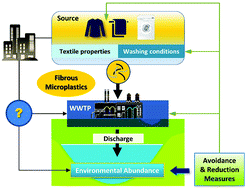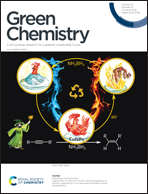Microplastics from textile origin – emission and reduction measures†
Abstract
Fibrous microplastics (FMPs) are ubiquitous worldwide, existing from lands to oceans and from surface waters to sediments. Ingestion and toxic effects of FMPs have been detected in organisms. FMPs released from synthetic textiles during laundering are thought to be a large source contributing to the current overall load of microplastics (MPs) in the environment. Given the fast growth of the synthetic textile market and the continuing emission of FMPs, this review aims to present measures to reduce FMP emissions to the environment. To achieve this aim, we summarise existing data and knowledge about FMPs to elucidate (a) the definition of FMPs, (b) FMP release during textile washing and influencing factors, and (c) FMP retention in wastewater treatment plants (WWTPs) at different treatment stages and subsequent emission to the aquatic environment. Based on the existing data, we estimate that the annual release of FMPs from synthetic textile washing is in the range of 50.6–1180 kg per 100 000 population. Such release might lead to an overall emission of 2.53–59 kg FMPs per year via WWTP discharges (serving 100 000 residents) to the receiving waters assuming a 95% WWTP removal efficiency. To this end, proactive solutions and suggestions are studied to avoid and reduce the release and emission of FMPs, considering reduction, reuse, recycling and end-of-pipe strategies.

- This article is part of the themed collections: 2021 Green Chemistry Hot Articles and Green Chemistry Reviews


 Please wait while we load your content...
Please wait while we load your content...